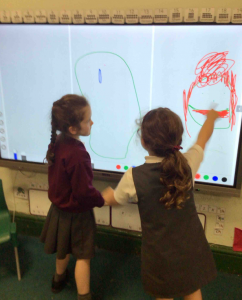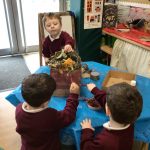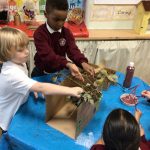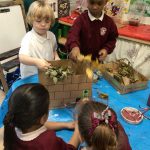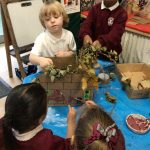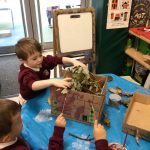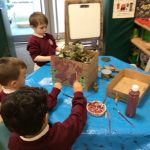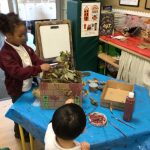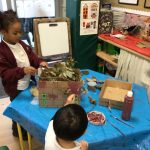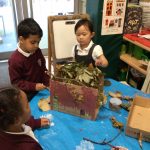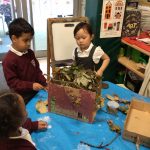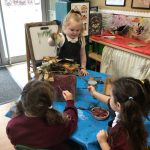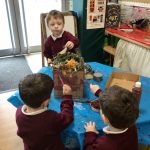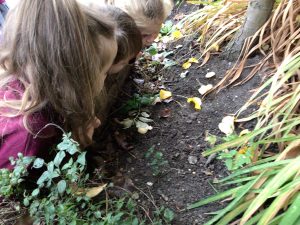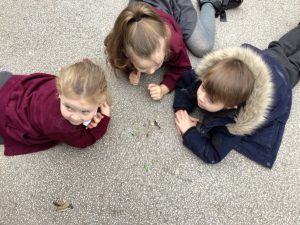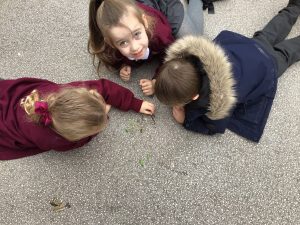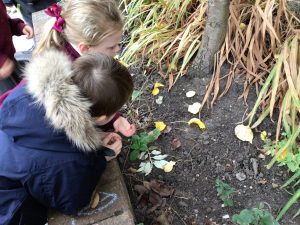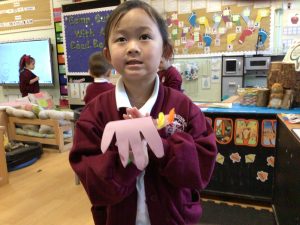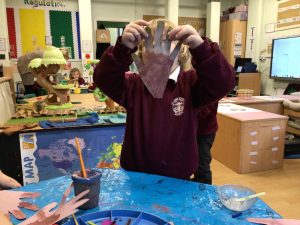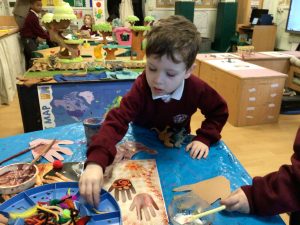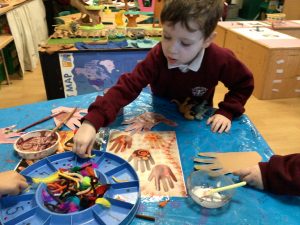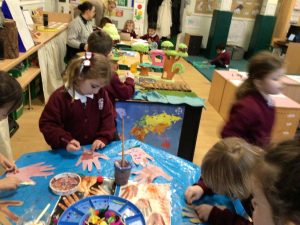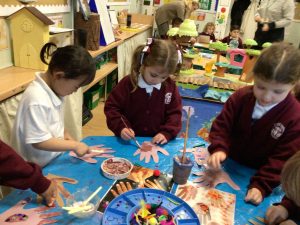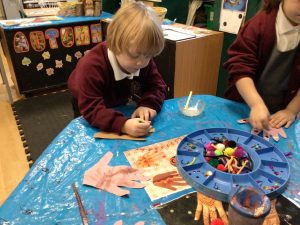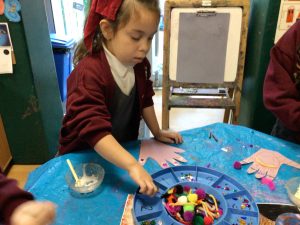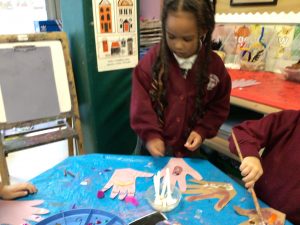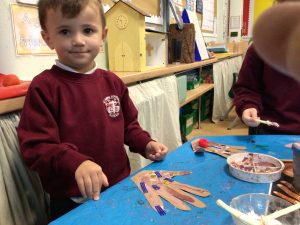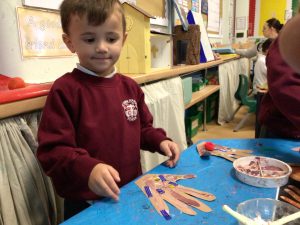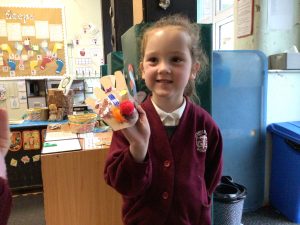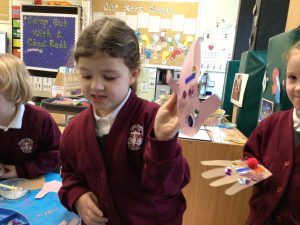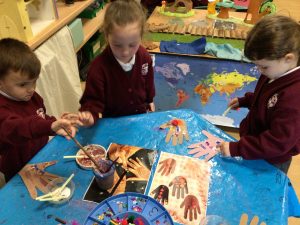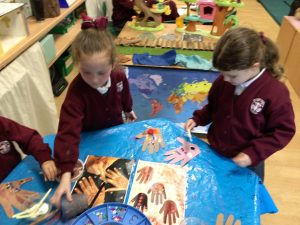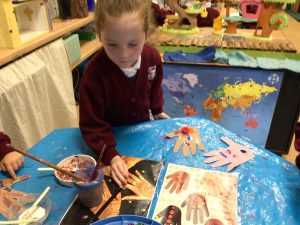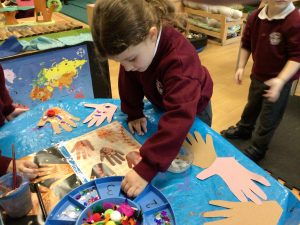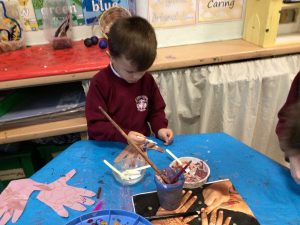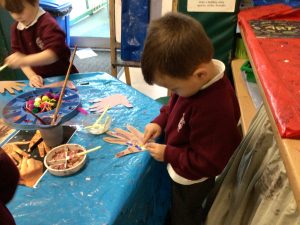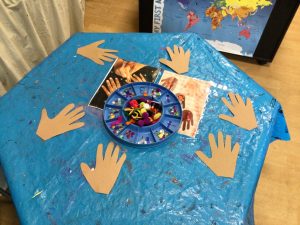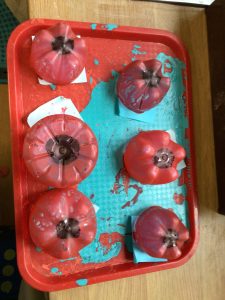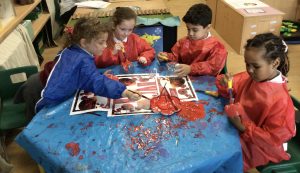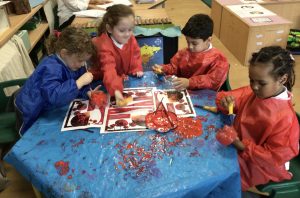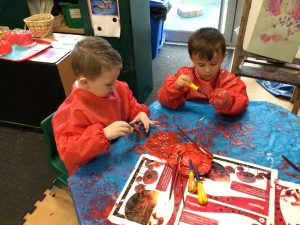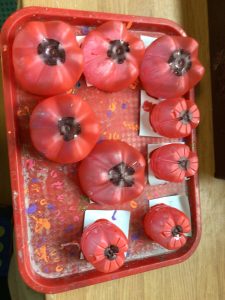Nursery
I use all of my senses in hands-on exploration of natural materials exploring collections of materials with similar and/or different properties. I can talk about what I see, using a wide vocabulary. I am beginning to make sense of my own life-story and family history. I show interest in different occupations. I explore how things work. I can plant seeds and care for growing plants understand the key features of the life cycle of a plant and an animal. I am beginning to understand the need to respect and care for the natural environment and all living things. I can explore and talk about different forces I can feel. I talk about the differences between materials and changes I notice. I am continuing to develop positive attitudes about the differences between people and know that there are different countries in the world, talking about the differences I have experienced or seen in photos.
Autumn 1
Use all their senses in hands-on exploration of natural materials.
Explore collections of materials with similar and/or different properties.
Talk about what they see, using a wide vocabulary.
Reception
I can talk about members of my family and community naming and describing people who are familiar
to me. I can comment on images of familiar situations in the past. I can compare and contrast characters from stories, including figures from the past. I can draw information from a simple map. I understand that some places are special to members of my community. I recognise that people have different beliefs and celebrate special times in different ways. I recognise some similarities and differences between life in this country and life in other countries. I can explore the natural world around me and describe what I see, hear and feel whilst outside. I recognise some environments that are different from the one in which I live and understand the effect of changing seasons on the natural world around me.
The level of development a child should be expected to have reached by the end of the EYFS is defined by the Early Learning Goals.
ELG: Past and Present
• Talk about the lives of the people around them and their roles in society. • Know some similarities and differences between things in the past and now, drawing on their experiences and what has been read in class.
• Understand the past through settings, characters and events encountered in books read in class and storytelling.
ELG: People, Culture and Communities
• Describe their immediate environment using knowledge from observation, discussion, stories, non-fiction texts and maps.
• Know some similarities and differences between different religious and cultural communities in this country, drawing on their experiences and what has been read in class.
• Explain some similarities and differences between life in this country and life in other countries, drawing on knowledge from stories, non-fiction texts and – when appropriate – maps.
ELG: The Natural World
• Explore the natural world around them, making observations and drawing pictures of animals and plants.
• Know some similarities and differences between the natural world around them and contrasting environments, drawing on their experiences and what has been read in class.
• Understand some important processes and changes in the natural world around them, including the seasons and changing states of matter.
Autumn 1
Children in Reception will be learning to:
- Talk about members of their immediate family and community.
- Understand the effect of changing seasons on the natural world around them.
- Name and describe people who are familiar to them.
- Recognise that people have different beliefs and celebrate special times in different ways
- Understand that some places are special to members of their community.
| Reception talking about members of their immediate family and community whilst drawing in the provision:
“Look that’s my dad. He’s eating pizza. Look I’ve done his hair all curly”. |
Reception are developing our understanding of the effect of changing seasons on the natural world around us through observing natural changes in our outdoor provision.
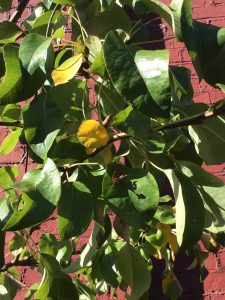
From one yellow leaf to …………… |
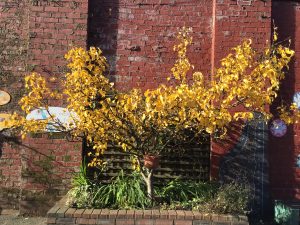 a whole tree full of yellow leaves!!!! Definitely a sign of Autumn. I wonder how long it will be until the tree has no leaves? a whole tree full of yellow leaves!!!! Definitely a sign of Autumn. I wonder how long it will be until the tree has no leaves? |
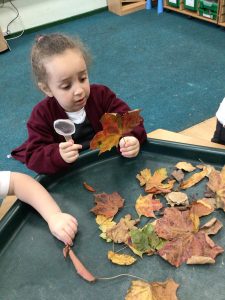 |
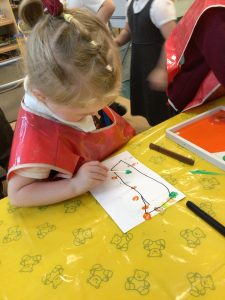 |
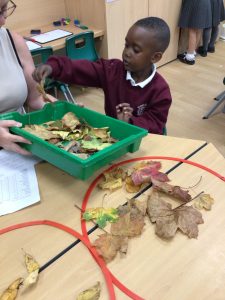 |
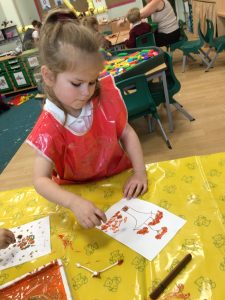 |
Using the fallen leaves in maths (to sort according to colour, size and shape) and illustrating a tree at autumn time, thinking about the colours needed (also an opportunity to develop fine motor skills).
Reception have been developing our understanding of the way in which people have different beliefs and celebrate special times in different ways. We have learning about the Sukkot Festival; a Jewish harvest festival that falls in autumn. It celebrates the gathering of crops and remembers a time when the Israelites lived in temporary shelters (sukkahs) during their journey through the desert after leaving Egypt. Reception worked collaboratively to make a sukkah. We learnt about the way in which the walls of the sukkah are built from man-made materials and the roof is made from natural materials including leaves. We made our walls from ‘bricks’, painting cardboard to replicate same and our roof from leaves and sticks.
Reception have been developing our understanding of the effect of changing seasons on the natural world around us through observing minibeasts in our outdoor provision. The children discovered a worm and carefully placed him back in his natural habitat. We dug a hole for the worm, discussing how the ground is harder in the season of autumn as the weather is cooler.
Reception have been developing our understanding of the way in which people have different beliefs and celebrate special times in different ways. We have been learning about the way in which Henna hand designs or mehndi are applied during Diwali as a symbol of joy, beauty and good fortune.
Reception have been developing our understanding of the way in which people have different beliefs and celebrate special times in different ways. Reception took part in a Remembrance Sunday event with St Luke’s Bombed Out Church in Liverpool. We painted and decorated bottle bases before contributing them to the Poppy Garden display at St Luke’s Church. Taking part in the project served to promote the value of recycling and collaborative creativity whilst engaging the children in the history of remembrance.

